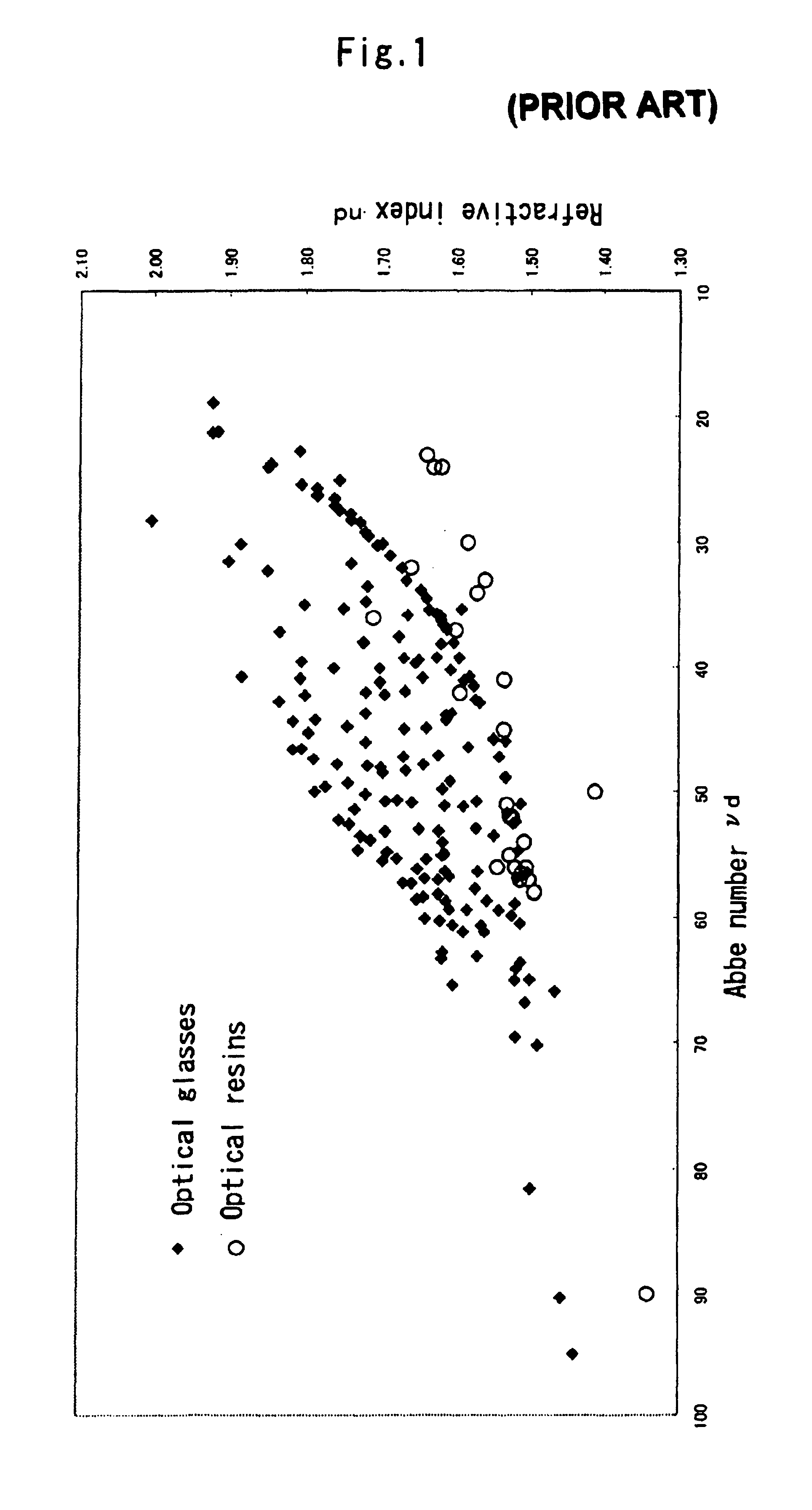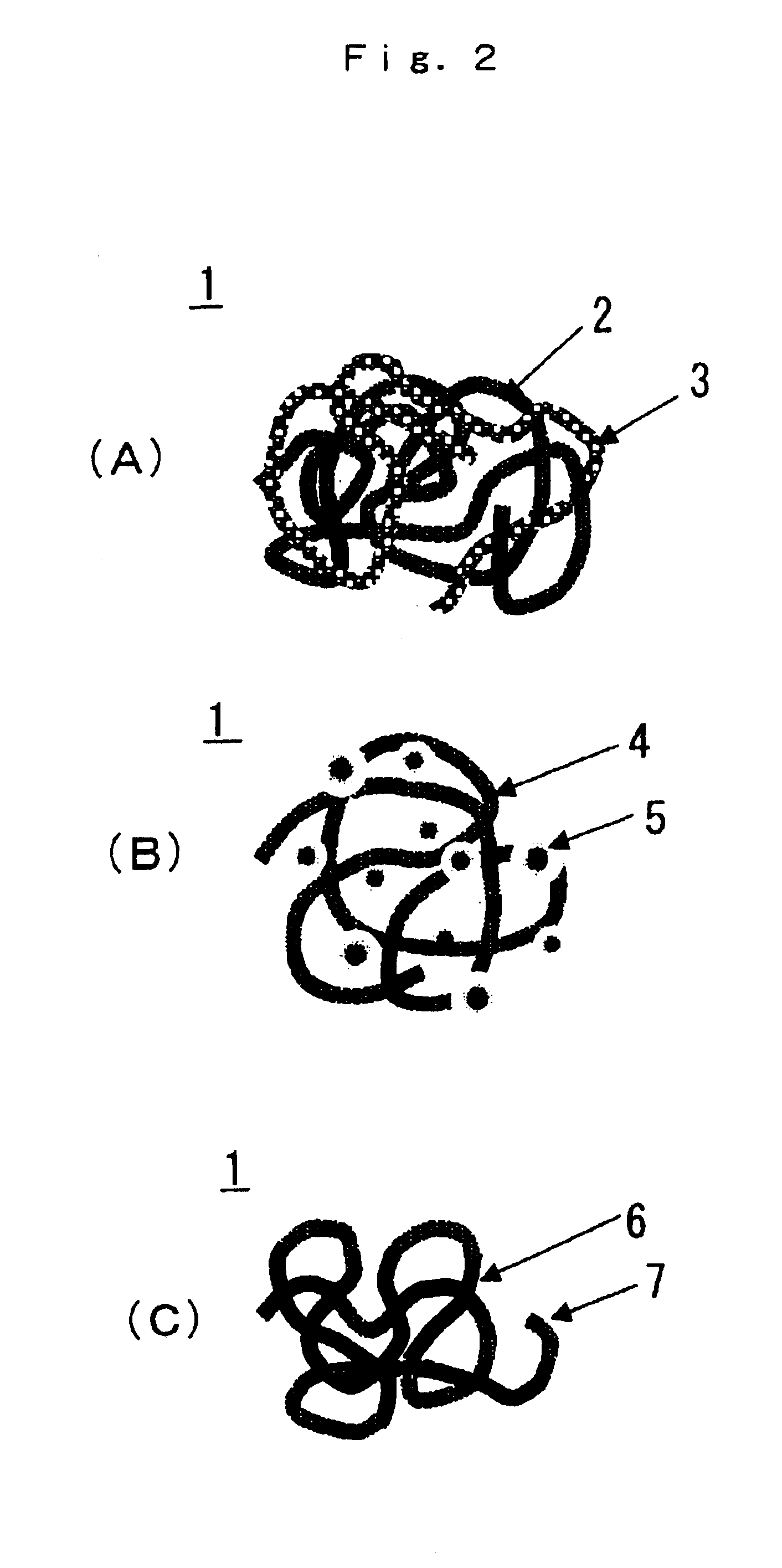Optical element
a technology of optical elements and synthetic resins, applied in the field of optical elements, can solve the problems of difficult aspheric configuration, and limited use of synthetic resins in optical designs
- Summary
- Abstract
- Description
- Claims
- Application Information
AI Technical Summary
Benefits of technology
Problems solved by technology
Method used
Image
Examples
example 1
[0046]A fluororesin (TVH220 made by Dainion Co., Ltd. with a melting point of 110 to 130° C.) obtained by copolymerization of tetrafluoroethylene-hexafluoropropane-vinylidene fluoride soluble in solvents based on lower ketones or esters was dissolved as the organic component in methyl ethyl ketone to prepare a solution having a 10% by mass concentration.
[0047]A solution (55.8 parts by weight) wherein methyltrimethoxysilane and methacryloyloxypropyltrimethoxysilane were mixed together with at a molar ratio of 8:2 was dissolved in 30 parts by weight of acetone, and the solution was stirred at room temperature for 24 hours with the addition of water in an amount of 18.9 parts equivalent to the methoxy group, thereby obtaining an inorganic polymer component solution. This solution was well mixed and stirred with a solution of fluororesin in methyl ethyl ketone while the ratio of the fluororesin to the mass of the nonvolatile matter in the aforesaid solution was 1:9 (by mass), thereby pr...
example 2
[0057]Transparent sheets of 4 mm in thickness were obtained as in Example 1 with the exception that calcium fluoride fine particles having an average particle diameter of 70 nm were used in place of the magnesium fluoride fine particles. The results obtained at varying calcium fluoride contents are tabulated below.
[0058]
TABLE 2Organic / inorganic hybridRefractiveAbbematerial vs. calcium fluorideindexnumber(ratio by mass)(nd)(vd)70:301.3778380:201.3708190:101.36079
[0059]In this case, too, low refractive-index chromatic dispersion characteristics were obtained. As in Example 1, the transparent sheet of 4 mm in thickness was compression molded at 230° C. while it was placed in a mold having a concave surface and a convex surface. As a result, a lens of the same concave meniscus shape could be molded into an optical element.
example 3
[0060]Methyltriethoxysilane and methacryloyloxypropyltrimethoxysilane were mixed together at a molar ratio of 8:2 to prepare a solution. Eighteen point nine (18.9) parts by weight equivalent to the alkoxy groups were added to 55.8 parts by weight of that solution, and the solution was stirred at room temperature for 20 hours for poly-condensation of the alkoxy groups. Then, 5.7 parts by weight of hydroxyethyl methacrylate were added and the solution was charged in an evaporator where volatile matter was removed at 40 to 50° C., thereby preparing an inorganic component solution. Then, a photopolymerization initiator Irgacure 149 was added to a methyl methacrylate monomer at 0.5:100 (by mass) to prepare a solution. This solution was mixed with the same weight of the inorganic component solution to obtain an organic / inorganic hybrid material solution.
[0061]Fifty (50) parts by weight of this solution were mixed with 50 parts by weight of magnesium fluoride fine particles having an avera...
PUM
| Property | Measurement | Unit |
|---|---|---|
| size | aaaaa | aaaaa |
| Abbe number | aaaaa | aaaaa |
| Abbe number | aaaaa | aaaaa |
Abstract
Description
Claims
Application Information
 Login to View More
Login to View More - R&D
- Intellectual Property
- Life Sciences
- Materials
- Tech Scout
- Unparalleled Data Quality
- Higher Quality Content
- 60% Fewer Hallucinations
Browse by: Latest US Patents, China's latest patents, Technical Efficacy Thesaurus, Application Domain, Technology Topic, Popular Technical Reports.
© 2025 PatSnap. All rights reserved.Legal|Privacy policy|Modern Slavery Act Transparency Statement|Sitemap|About US| Contact US: help@patsnap.com



